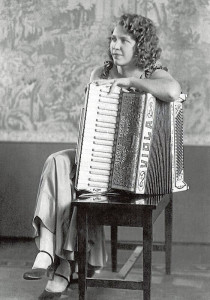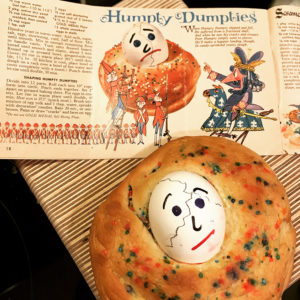We’re in the final stretch of Lent, and in the midst of it each year come three celebrations to take a bit of the edge off of all that spareness. They begin today with St. Urho’s Day, when we are all perhaps a little bit Finnish. I wrote this piece for St. Urho’s Day a couple of years ago. Since then, Finlandia Days has returned to Bryant Park here in Lake Worth, though it has a new name: Midnight Sun Festival. Fair enough. I love the photo of Viola Turpeinin, whose large septa toothed coral, the one she found on Lake Worth Beach, is on display at the Museum of the City of Lake Worth, right downtown between Lake and Lucerne Avenues. And I love her “Dream Waltz”–– Unelma Valssi. I’d like you to love her, too, which is why I’ve chosen to reprint her story today for St. Urho’s Day. And so here we go.
Here we are in the midst of one of the most interesting weeks of the year, at least in terms of quirky holidays. We have not one, not two, but three saints’ days to celebrate, and while saints’ days are not all that unusual, each one of these is important to a particular ethnic group, which makes for some very big celebrating, especially welcome in these more somber days of Lent.
There is of course the granddaddy of saints’ days: St. Patrick’s Day, on the 17th. Everyone, it it said, is at least a little Irish on St. Patrick’s Day. Two days later brings St. Joseph’s Day: not as widely celebrated, but immensely important to Italy and the Italian American community, and we’ll be eating zeppole, pastries made especially for the day. But ahead of St. Joseph’s Day and ahead of St. Patrick’s Day both comes today’s celebration: St. Urho’s Day. And today, perhaps, everyone is at least a little bit Finnish.
St. Patrick may have driven all the snakes from Ireland, but it was St. Urho who drove all the grasshoppers from Finland, saving the vineyards and the the grape harvest and thus the wine. This he accomplished by proclaiming Heinäsirkka, heinäsirkka, mene täältä hiiteen, or in English, “Grasshopper, grasshopper, go to Hell!”
Perhaps you are thinking, “I’m not familiar with this story.” This is because you do not live near Finns. I first heard about St. Urho many years ago here at the local Finlandia Days celebration, which back then was held at Bryant Park on the lagoon here in Lake Worth. In that same park there is a memorial to Finnish war heroes. Up the road on Lake Avenue in the Allstate Insurance Office is the Finnish Consulate. Across the town line in Lantana is the Finnish American Rest Home and Suomi Talo (or Finland House, the Finnish social club) and Palm Beach Bakery, one of a couple of Finnish bakeries in the area. Between Lake Worth and Lantana, we have more Finns here than anywhere else save Finland. And so in this land, where it is so easy to come across folks speaking Spanish and Creole and Portuguese most any day of the week, it is just as easy to hear some Finnish, too. And Finnish tales, like the legend of St. Urho.
And so at Finlandia Days celebration years ago, somewhere in between the Wife Carrying Contest and a performance by the Finnish Accordion Orchestra, I heard the story of the saint who drove the grasshoppers from Finland. He is honored the day before a certain more famous saint who drove the snakes from Ireland. The Irish may wear green on St. Patrick’s Day, but on St. Urho’s Day the Finns wear green and purple, too. Chances are good they’ll be listening today to the music of Viola Turpeinen, the legendary Finnish American accordionist who lived here in Lake Worth in the 1950s. She called her house “the home that polka built.” Unelma Valssi is a favorite Viola Turpeinen recording: “Dream Waltz.” So fitting for a spring day in Lake Worth or in Lapland or in Michigan, where she was born in 1909. It’s the kind of music that floats out onto the air through the open windows in this gentle season and lulls us all to springtime dreaming.
Image: Viola Turpeinen and her accordion.

